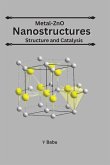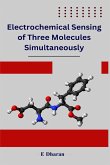Metal oxide nanocomposites have been widely investigated for their photocatalytic applications due to their excellent properties such as high surface area, unique electronic structure, and high stability. These nanocomposites have shown potential for various environmental and energy applications, including wastewater treatment, air purification, and solar energy conversion. One of the key advantages of metal oxide nanocomposites is their ability to harness solar energy and convert it into useful energy or chemical reactions through photocatalysis. This process involves the absorption of photons by the metal oxide nanoparticles, which excites electrons to higher energy levels and creates electron-hole pairs. These electron-hole pairs then participate in redox reactions with adsorbed species on the surface of the nanoparticles, leading to the degradation of pollutants or the production of valuable chemicals. Several metal oxide nanocomposites have been investigated for photocatalytic applications, including titanium dioxide (TiO2), zinc oxide (ZnO), and iron oxide (Fe2O3). These nanocomposites have been modified with various materials such as carbon, graphene, and other metal oxides to improve their photocatalytic performance In conclusion, metal oxide nanocomposites have shown great potential for photocatalytic applications due to their unique properties and high stability. Researchers have modified these nanocomposites with various materials to enhance their photocatalytic performance for different applications. The development of efficient and cost-effective photocatalysts is essential for addressing the environmental and energy challenges faced by our society, and metal oxide nanocomposites offer a promising solution.







